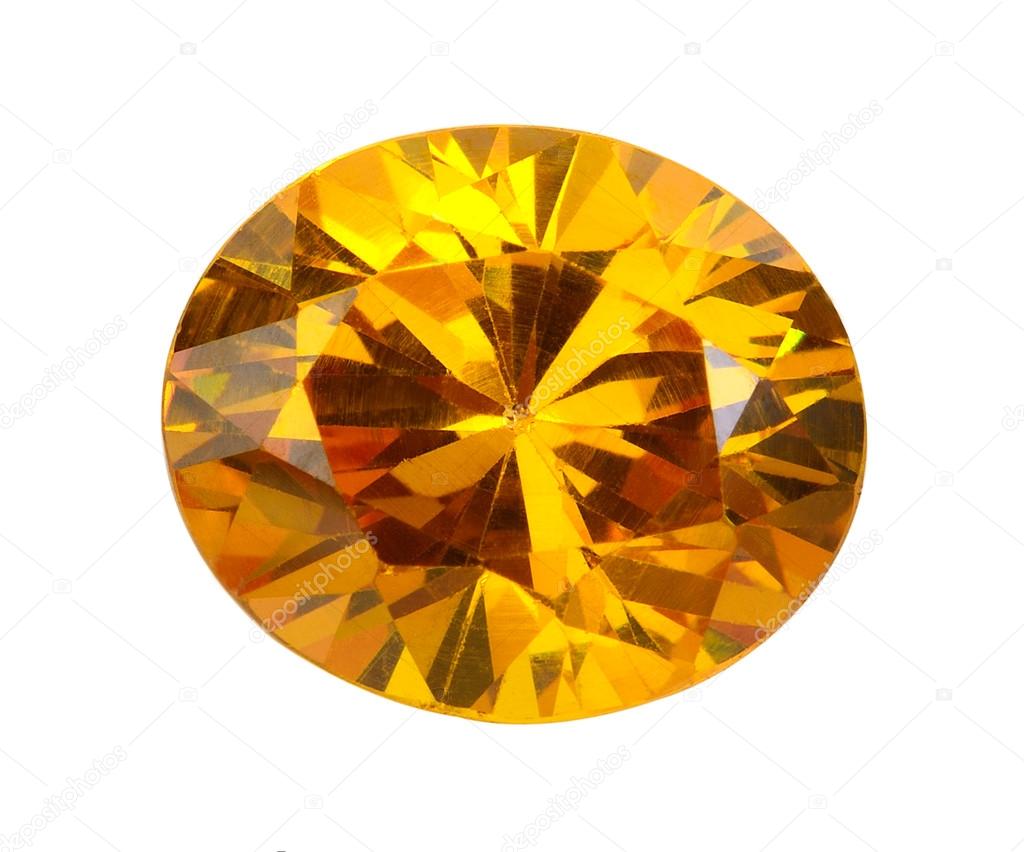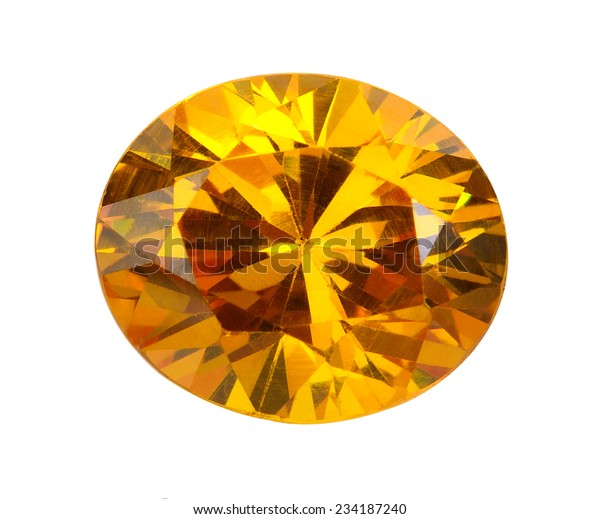

If you give that a little thought, it will occur to you just how skilled the cutters from the Hunsrück really were. The raw stone was actually held in the cutter's hand during this process.

Just as they had been used to doing with agate and other kinds of quartz, the cutters faceted the citrine using large, rotating sandstones over decades. Thus the golden-yellow quartzes made a contribution to Idar-Oberstein's becoming - and remaining - one of the world's great gemstone centres. In Europe, the boom on these yellow to reddish crystal quartzes didn't begin until, in the 1930s, expatriate agate cutters from Idar-Oberstein sent large quantities of citrine back home, along with amethyst and agate, from Brazil and Uruguay. Only a trained specialist can recognise the signs of heat treatment at all, burnt stones having subtle stripes whilst the yellow of natural ones is cloudy.

However, in the course of 200 years, its application has become so much a matter of course that most of the stones available in the trade today are in fact burnt amethysts or smoky quartzes. This heat treatment at temperatures of between 470 and 560 degrees has to be carried out very carefully and requires a great deal of experience. Perhaps the citrine wouldn't have been talked about any more at all if, in the middle of the 18th century, it had not been for the discovery that amethysts and smoky quartzes can also be rendered yellow by so-called burning. Historically, it has been found in Spain, on the Scottish island of Arran, in France, Hungary and in several mines overseas. Rare though it is, yellow does in fact occur in quartz in Nature, if seldom, when there are traces of iron in the silicon dioxide. However, the citrine fulfils everyone's colour wishes, from lemon yellow to reddish brown. A diamond or a sapphire may be yellow - those will be expensive -, or sometimes a tourmaline or chrysoberyl, though these tend toward green somewhat, a golden beryl or eben a pure topaz, which we will mention again later on. There are not many yellow gemstones in the world of jewels. Like golden Rhine wine or sparkling Madeira, heavy and sweet, citrine jewellery shimmers and brings a hint of sunshine to those dull November days. Even if their refractive index is relatively low, the yellow stones have just that mellow, warm tone that seems to have captured the last glow of autumn. It won't immediately take offence at being knocked about either, since its cleavage properties are non-existent. Like all crystal quartzes, the citrine has a hardness of 7 on the Mohs scale and is thus, to a large extent, insensitive to scratches. The name is derived from the colour - the yellow of the lemon -, although the most sought-after stones have a clear, radiant yellowish to brownish red. And it does so at prices which are by no means unaffordable. However, the citrine is a member of the large quartz family, a family which, with its multitude of colours and very various structures, offers gemstone lovers almost everything their hearts desire in terms of adornment and decoration, from absolutely clear rock crystal to black onyx. Thus the history of the citrine is closely interwoven with that of the topaz, and coincides with it completely when it comes to the interpretation of alleged miraculous powers. Many people have come to know and love this stone under the name gold topaz, or Madeira or Spanish topaz, although in actual fact it has very little in common with the higher-quality gemstone topaz - except for a few nuances of colour. Interestingly, a popular gemstone on the market is a mixture of half amethyst and half citrine and is given the name ametrine, made by heating an amethyst until it turns into citrine, then irradiating a part of the resulting crystal or gemstone to convert that portion back to amethyst.Ĭitrine, the stone for the month of November. Citrine made by heating amethyst may be returned to a purple color by bombarding it with beta radiation. Much of the natural citrine may have started out as amethyst but heat from nearby magmatic bodies may have caused the change to citrine. Citrines whose colors have been produced by artificial means tend to have much more of an orange or reddish caste than those found in nature, which are usually a pale yellow. Specimens of low grade, inexpensive amethyst or smoky quartz are often cooked at high temperatures to produce the more profitable orange yellow citrine. Most citrines on the market have been heat treated. Although often cut as a gemstone, citrine is actually somewhat rare in nature. Citrine is any quartz crystal or cluster that is yellow or orange in color.


 0 kommentar(er)
0 kommentar(er)
